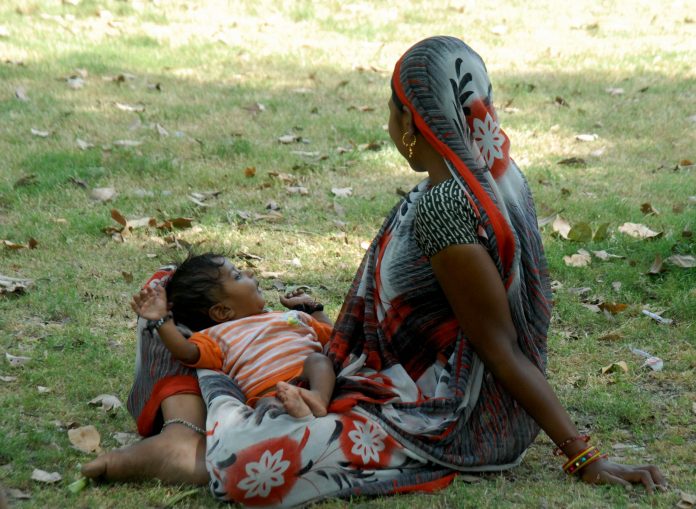
There are reports that the minimum age of marriage for girls may be raised from 18 to 21. This is important for maintaining maternal and infant health.
By Dr KK Aggarwal
India, the most populous nation in South Asia, has the highest number of deaths in the under-five age group in this region. The leading causes of child mortality globally and in South Asia remain infectious diseases, specifically pneumonia and diarrhoea. However, UNICEF’s 2008 report on the State of the World’s Children said that issues of poverty and malnutrition heighten the vulnerability of infants and children to these infections and to mortality, particularly for those with low birth weight.
Of related concern is the large proportion of adolescent mothers in the country and the link between this and poor infant and child health outcomes. Almost half of 20-24-year-old women in India (44.5 percent) are married before the age of 18, and 22 percent of them have given birth by 18. Such early motherhood, in India and elsewhere, is associated with increased neonatal death and stillbirth and low birth weight in infants.
These disproportionate risks seem to be linked to social and health related vulnerabilities among adolescents, including increased rates of poverty, maternal depression and malnutrition. Lack of education and inadequate access to healthcare (because of impeded mobility as well as residence in rural areas with no local providers) may also account for lower use of antenatal care by adolescents, skilled delivery care and complete infant vaccination schedules. Biological vulnerability among younger mothers may also persist through physical immaturity and the effects of chronic malnutrition. Early motherhood is also linked with poor maternal health outcomes, including pregnancy complications and maternal mortality, which in turn increases the likelihood of poor infant and child health outcomes.
Adolescent mothers are likely to be more malnourished, have less opportunities for DPT immunisation and have longer duration of hospitalisation. They are also more likely to be illiterate. Therefore, the development of preventive and therapeutic strategies will be required to reduce morbidity and improve the health and nutrition status of both children and their adolescent mothers.
In India, one out of every three women is underweight, putting them at risk of delivering babies with low birth weight. Adolescents among the urban and rural poor have a high incidence of chronic energy deficiency and anaemia, more so in girls than in boys. Adolescent pregnancies (15-19 years) contribute to 19 percent of total fertility in India and record the highest maternal mortality rates.
Besides maternal age, lack of education, low socio-economic status, maternal under-nutrition and limited access to maternal health services are important determinants of poor pregnancy outcomes. Low birth weight is the major outcome for infants and an important determinant of increased child mortality. There is lack of data for long-term follow-up of infants of adolescent mothers versus mothers 20 years and above, and more specifically, in the urban poor setting.
During his Independence Day speech, Prime Minister Narendra Modi said: “We have formed a committee to ensure that daughters are no longer suffering from malnutrition and they are married off at the right age. As soon as the report is submitted, appropriate decisions will be taken about the age of marriage of daughters.” Reports suggest the minimum age of marriage for girls may be raised from 18 at present to 21.
So how prevalent is underage marriage? Data shows that the majority of women in India marry after the age of 21 and that their mean age of marriage is 22.1 years. This does not mean that child marriages have disappeared. The latest National Family Health Survey found that about 26.8 percent of women aged 20-24 were married before adulthood (age 18). Preventing early marriage can reduce maternal and infant mortality ratio, according to Dipa Sinha, professor of economics at Ambedkar University. At present, the maternal mortality ratio — the number of maternal deaths for every 1,00,000 children born—is 145. India’s infant mortality ratio shows that 30 out of every 1,000 children born in a year die before the age of one. Both these indicators are the highest among BRICS economies.
Young mothers are more susceptible to anaemia, said Shweta Khandelwal, head of Nutrition Research and Additional Professor at the Public Health Foundation of India. More than half of women in the reproductive age (15-49 years) in India are anaemic. The prevalence of anaemia among women has consistently been high over the last 20 years.
So can a mandated age of marriage bring about a change in population levels? Purnima Menon, senior research fellow at the International Food Policy Research Institute in Delhi, said poverty, limited access to education, economic prospects and security concerns are the known reasons for early marriage. “If the main causes of early marriage are not addressed, a law will not be enough to delay marriage among girls,” Menon cautioned. Women in the poorest 20 percent of the population are also married much younger than their peers from the wealthiest 20 percent. The average age at marriage of women with no schooling was 17.6, considerably lower than that for women educated beyond Class 12. Almost 40 percent of girls aged 15-18 do not attend school, as per a report of the National Commission for Protection of Child Rights. Nearly 65 percent of these girls are engaged in non-remunerative work.
That is why many believe that merely tweaking the official age of marriage may discriminate against the poorer, less-educated and marginalised women.
—The writer is President, Confederation of Medical Associations in Asia and Oceania, and former National President, IMA
Lead Picture: UNI

